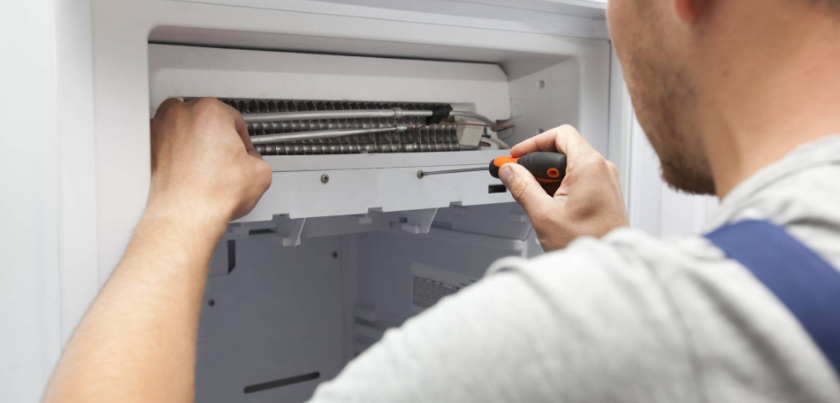
When your cold storage system fails, it can result in serious losses—especially in businesses that depend on temperature-controlled environments to store perishable goods. Whether you run a restaurant, a grocery store, or a medical facility, an unexpected breakdown can halt operations and put your inventory at risk. For businesses, knowing the basics of walk in freezers repair and emergency steps to take when your cold storage stops working is critical for minimizing damage and downtime. This guide will help you understand what to do, what to look for, and how to prevent issues in the future.
Understanding the Importance of Cold Storage
Cold storage units are the backbone of many commercial operations. They regulate temperatures to preserve the quality and safety of food, pharmaceuticals, and other sensitive items. A breakdown can cause a spike in temperature, leading to spoilage, compliance issues, and significant financial loss.
The most common cold storage units include walk-in freezers and coolers. These systems are designed for durability and efficiency, but like any equipment, they are subject to wear and malfunction. Recognizing early signs of trouble can help you act quickly and avoid long-term consequences.
Immediate Steps to Take When Cold Storage Fails
1. Assess the Situation Quickly
When you notice a problem with your cold storage system, time is of the essence. Begin by checking the unit’s temperature. If the internal temperature has risen above safe levels (typically 0°F for freezers), take action immediately.
2. Check Power Supply
One of the most common reasons a cold storage unit stops working is a simple power issue. Verify that the circuit breaker hasn’t tripped and ensure the unit is still plugged in. If the problem is electrical, avoid DIY fixes unless you’re trained—call a licensed electrician or technician.
3. Move Perishables to Backup Storage
If you have access to alternative cold storage or portable refrigeration units, move perishable items quickly. Keeping items at safe temperatures is critical for food safety and product integrity. If you’re a business, this step can help save thousands in lost inventory.
4. Contact a Repair Specialist
For commercial settings, it’s best to have a go-to professional for walk in freezers repair. These specialists can quickly diagnose the problem, determine whether it’s mechanical or electrical, and begin repairs. Always choose certified and experienced technicians familiar with your brand and system type.
Common Causes of Cold Storage Failure
Understanding why your cold storage might stop working can help you prepare better. Here are some typical causes:
Compressor Failure: The compressor is the heart of the refrigeration system. If it malfunctions, the entire system stops cooling effectively.
Refrigerant Leaks: A drop in refrigerant levels reduces cooling capacity and puts strain on other components.
Dirty Condenser Coils: When coils are dirty or clogged, heat cannot be released efficiently, causing the unit to overheat.
Faulty Thermostat: A malfunctioning thermostat can lead to incorrect temperature readings, preventing the unit from cooling properly.
Damaged Seals or Doors: If the door isn’t sealing properly, cold air can escape, and warm air can enter, raising internal temperatures.
How to Prevent Cold Storage Breakdowns
Prevention is always better than cure, especially when it comes to cold storage. A well-maintained system will last longer and perform more reliably.
1. Schedule Regular Maintenance
Routine maintenance helps catch issues before they become major problems. A certified technician can check refrigerant levels, inspect components, clean coils, and test the thermostat during scheduled visits.
2. Clean and Inspect Weekly
Basic weekly cleaning and inspections by in-house staff can prevent dirt buildup and allow early detection of issues like door seal wear or unusual noises.
3. Invest in a Temperature Monitoring System
Smart temperature monitoring devices can alert you immediately if the unit deviates from preset safe ranges. This gives you time to act before significant damage occurs.
4. Train Your Staff
Ensure that your team knows how to recognize signs of malfunction, such as strange noises, ice buildup, or inconsistent temperatures. Encourage them to report problems immediately.
When to Replace vs. Repair
Sometimes, repairs are no longer cost-effective—especially for older systems. Here’s how to know when replacement might be the better option:
Frequent Breakdowns: If your unit requires repairs every few months, the cost of service may exceed the value of a new system.
High Energy Bills: Older units tend to be less energy-efficient. Upgrading to a newer model can result in long-term savings.
Obsolete Parts: If replacement parts are no longer available or are extremely expensive, it may be time to upgrade.
Always get a second opinion from a trusted expert in walk in freezers repair before making a decision.
Choosing the Right Repair Service
Selecting the right repair company is essential to minimize downtime and protect your inventory. Here are some tips:
Look for Certified Technicians: Ensure they have experience with commercial refrigeration units.
Read Reviews: Online reviews and testimonials can offer insight into a company’s reliability and customer service.
Ask About Emergency Services: A provider that offers 24/7 support can be a lifesaver during after-hours breakdowns.
Check for Preventative Plans: Some companies offer service contracts for ongoing maintenance at discounted rates.
Conclusion
Cold storage is critical for many businesses, and any interruption can have serious consequences. When your system stops working, quick action and expert support are key to minimizing damage. Whether it’s a minor thermostat issue or a major compressor failure, knowing the steps to take—and having a trusted resource for walk in freezers repair—can save you time, money, and stress.
Being proactive with maintenance and staff training can also reduce the risk of breakdowns. Remember, in the world of refrigeration, even a few degrees can make a big difference. Stay informed, stay prepared, and ensure your cold storage always performs at its best.

